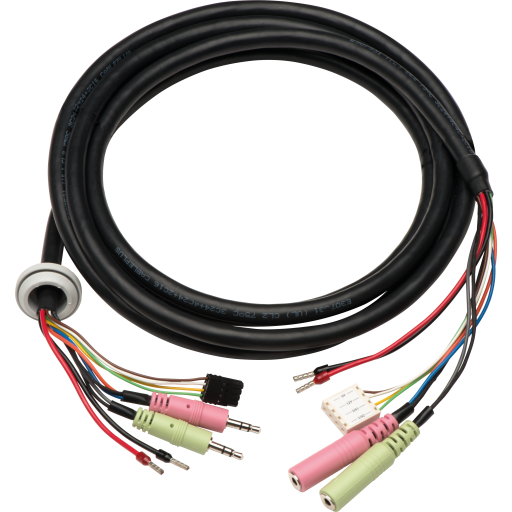Don't wanna be here? Send us removal request.
Text
Unraveling the Wonders of Multicables: A Comprehensive Guide

In the fast-paced world of technology, the demand for efficient and streamlined connectivity solutions has never been higher. As our reliance on electronic devices continues to grow, the need for organized and reliable cable management becomes increasingly crucial. Multicables, a sophisticated solution designed to address this challenge, have emerged as a game-changer in the realm of connectivity. In this article, we will explore the multifaceted world of multicables, understanding their composition, applications, and the advantages they bring to diverse industries.
Understanding Multicables:
multikabels, also known as multiconductor cables or multipair cables, are a type of cable that consists of multiple insulated conductors bundled together within a single sheath. These conductors can be twisted or parallel, depending on the specific requirements of the application. Each conductor within the multicable is color-coded for easy identification, simplifying the installation and maintenance processes.
Composition and Construction:
The construction of multicables is carefully engineered to meet the demands of various industries and applications. Typically, the conductors are made of copper or aluminum due to their excellent electrical conductivity. The insulation material varies, with options like PVC (Polyvinyl Chloride), XLPE (Cross-Linked Polyethylene), or Teflon being commonly used to protect each conductor from external factors and ensure optimal signal transmission.
Applications Across Industries:
Multicables find applications across a wide range of industries, owing to their versatility and reliability. In the field of telecommunications, multicables play a crucial role in transmitting voice and data signals over long distances. In the audio and video production industry, multicables simplify the complex task of connecting numerous devices, providing a tidy and efficient solution for recording studios, live events, and broadcasting setups.
Furthermore, multicables are extensively used in automation and control systems, where multiple signals need to be transmitted simultaneously. In industrial settings, these cables help streamline complex machinery connectivity, contributing to improved efficiency and reduced downtime. The medical field also benefits from multicables in applications such as medical imaging and diagnostic equipment, where precision and signal integrity are paramount.
Advantages of Multicables:
Simplified Cable Management: The consolidation of multiple conductors within a single sheath simplifies cable management, reducing the clutter associated with individual cables.
Cost-Efficiency: Using multicables can be more cost-effective than deploying multiple single-conductor cables, as they reduce material costs and installation time.
Enhanced Signal Integrity: The design of multicables minimizes electromagnetic interference (EMI) and crosstalk, ensuring that each signal maintains its integrity even when multiple conductors are bundled together.
Flexibility and Adaptability: Multicables are available in various configurations, allowing users to choose options that best suit their specific needs. This flexibility makes them adaptable to a wide range of applications.
Conclusion:
Multicables stand as a testament to the continual evolution of cable technology to meet the demands of our interconnected world. Their versatility, efficiency, and reliability make them an indispensable solution across diverse industries. As technology continues to advance, multicables are likely to play an increasingly pivotal role in shaping the future of connectivity, offering a seamless and organized approach to managing the complex web of electronic connections in our modern era.
1 note
·
View note